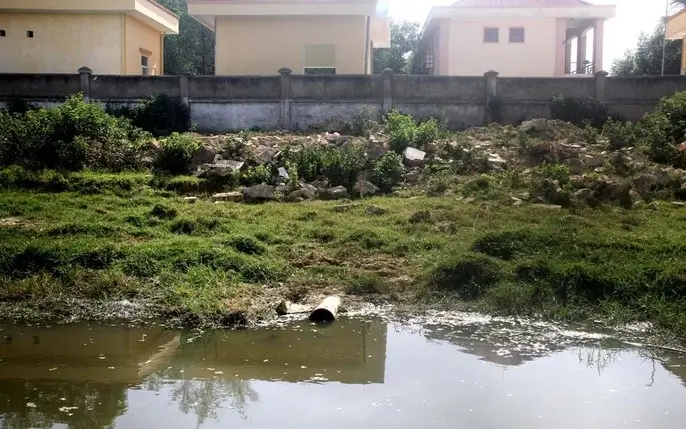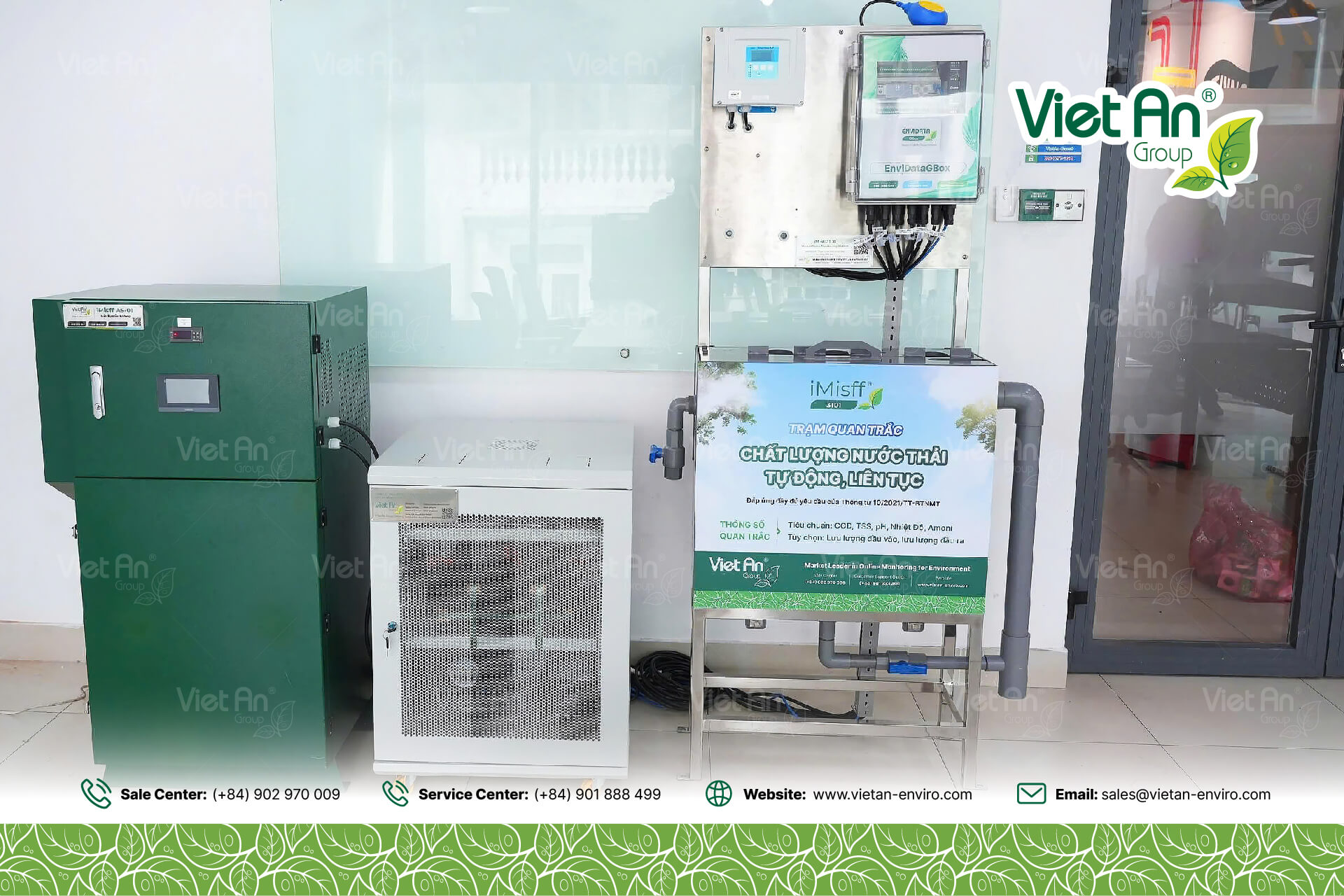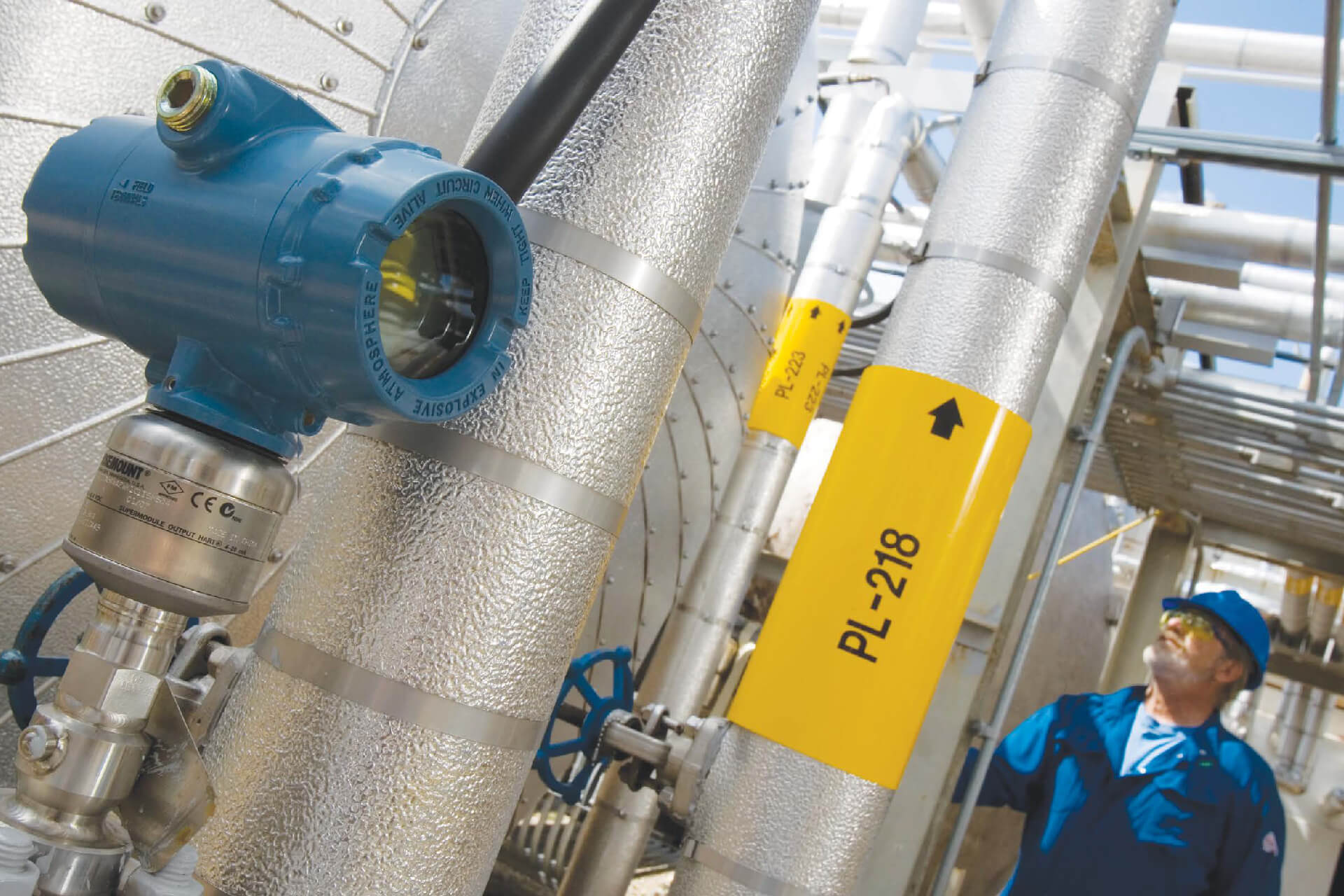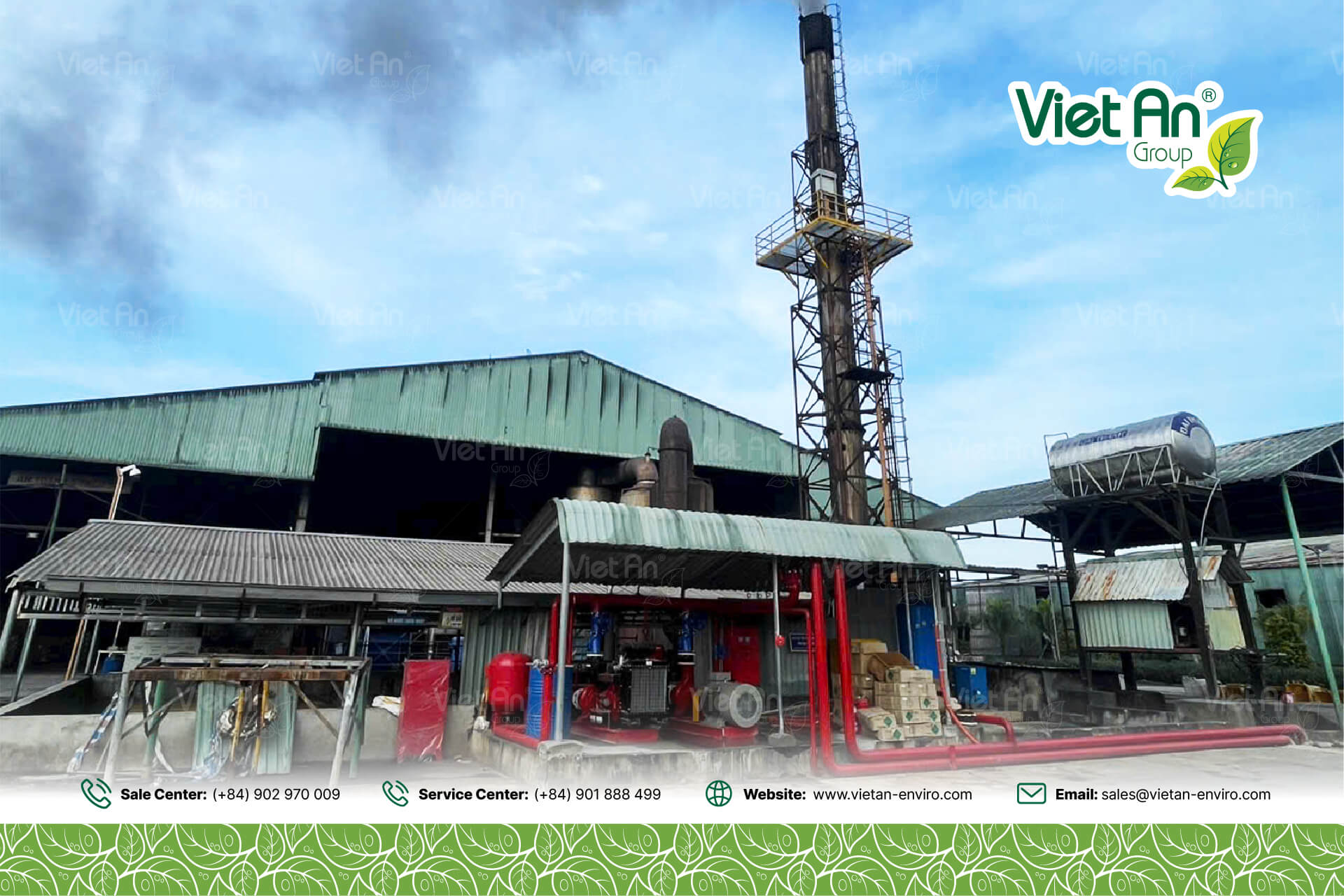COD index in wastewater is an important index in assessing the pollution level of wastewater. Measuring and controlling COD not only helps wastewater production and treatment facilities comply with regulations on environmental monitoring but also ensures the protection of public health.
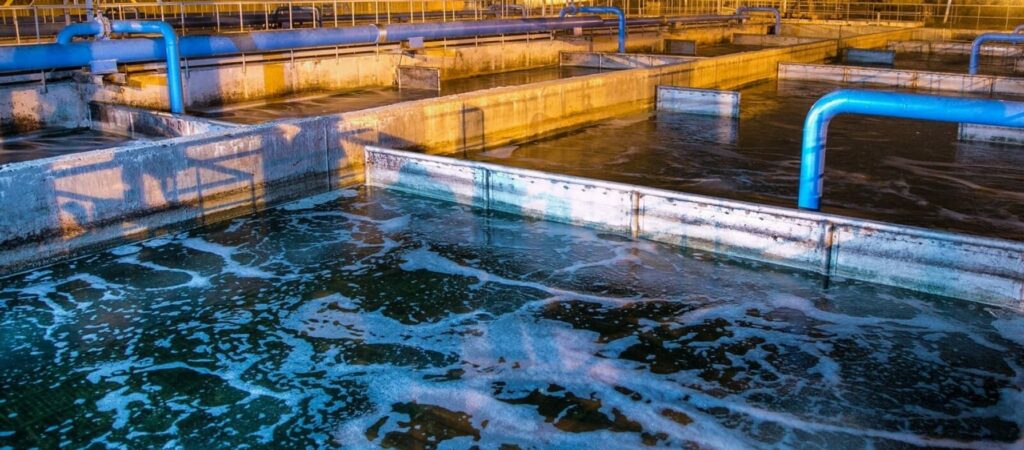
1. Introduction to COD index in wastewater
COD in wastewater, short for Chemical Oxygen Demand, measures the amount of oxygen required to oxidize a significant portion of organic matter and some inorganic matter such as nitrite in water. This measurement is usually performed using potassium dichromate in an acidic medium with a silver ion catalyst at 68°C for about 2 hours. COD results are expressed in mg/L (milligrams per liter).
COD index is an important criterion to assess the level of organic pollution in water. A high COD index shows that the organic content in water is at a high level, which can be harmful to the environment and human health.
High COD often leads to oxygen deficiency in water, as microorganisms decomposing organic matter consume oxygen, causing fish kills, algae growth, and affecting the ecosystem. COD is also used to set up wastewater treatment systems, monitor system performance, and evaluate, giám sát nước thải sau khi xử lý.
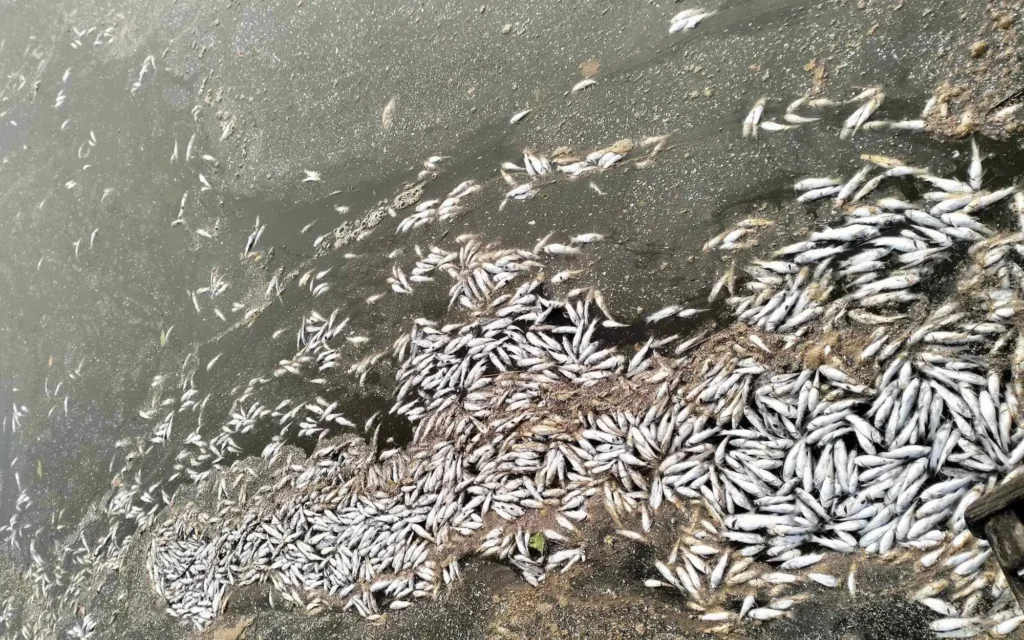
Origin of COD in wastewater
- Industrial production activities: Wastewater from industries such as chemicals, textiles, footwear, food processing, etc. often contains high COD content due to many toxic organic substances.
- Domestic activities: COD in domestic wastewater from residential areas, schools, hospitals, etc. also contains a certain amount of COD due to organic substances such as leftover food, waste, etc.
- Agricultural wastewater: Wastewater from livestock and crop farming activities using chemical fertilizers, pesticides, etc. also contributes to increasing COD in water.
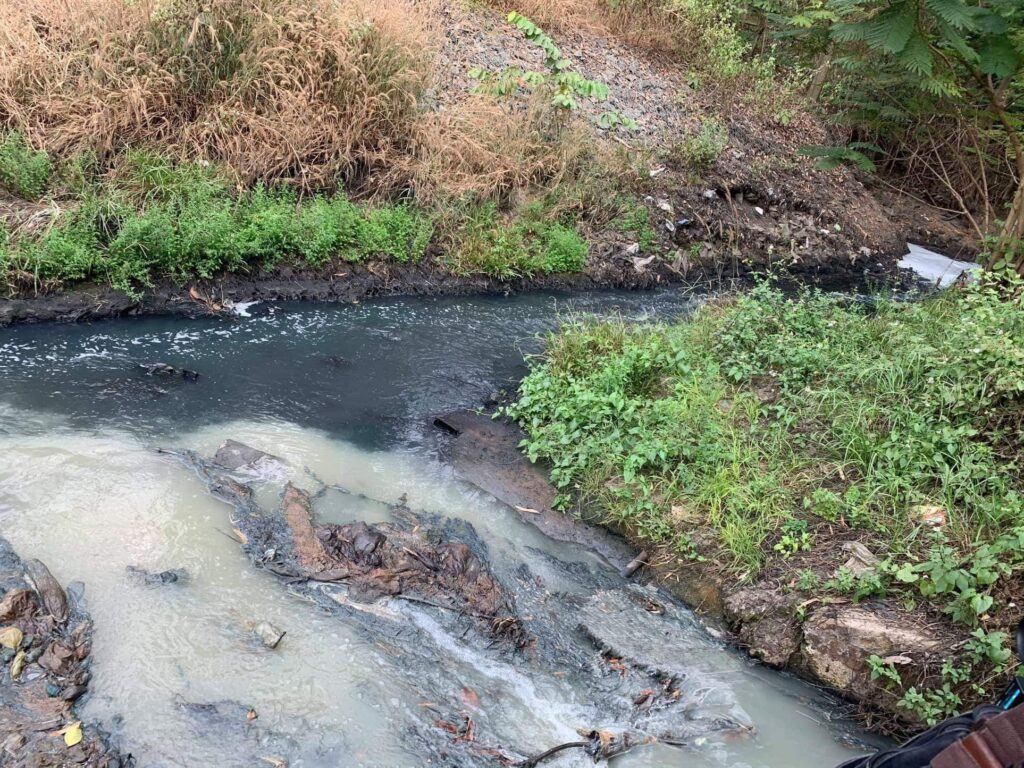
2. Methods of measuring COD index in wastewater
COD determination is based on the principle that organic substances in water will be oxidized by potassium dichromate (K₂Cr₂O₇) in an acidic environment. By measuring the amount of potassium dichromate consumed, we can calculate the COD index. Currently, the two common methods for determining COD are the titration method and the colorimetric method.
Introducing the formula for calculating COD in wastewater:
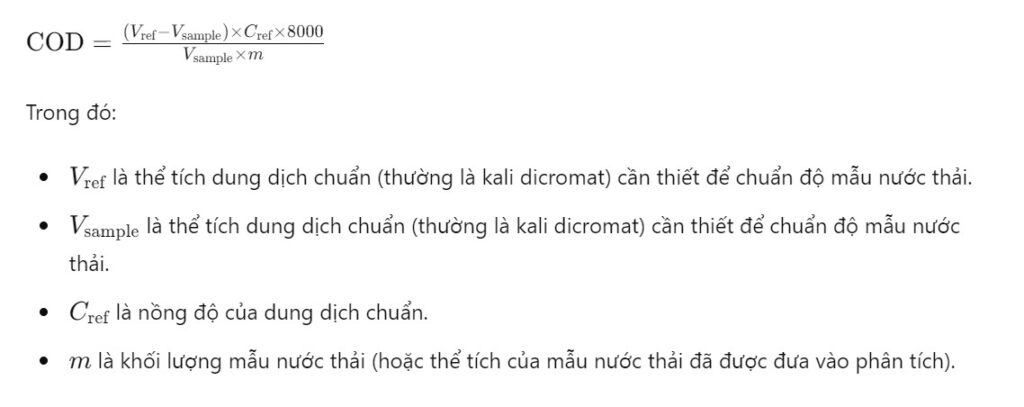
Titration method
In the titration method, potassium dichromate reacts with organic substances present in the water sample. When the reaction is complete, the excess potassium dichromate will react with ferric ammonium sulfate ((NH₄)₂Fe(SO₄)₂·6H₂O).
When ferrous ammonium sulfate is added slowly, hexavalent chromium is reduced to trivalent chromium. The equivalence point is determined by a color indicator, when the ferrous ammonium sulfate has completely reacted with the excess potassium dichromate. Based on the change in the amount of dichromate and the amount of ferrous ammonium sulfate used, we can calculate the amount of potassium dichromate consumed during the oxidation of organic matter.
Although this method is simple and commonly used in laboratories, it requires high precision and depends on the skill of the operator, which can lead to errors.
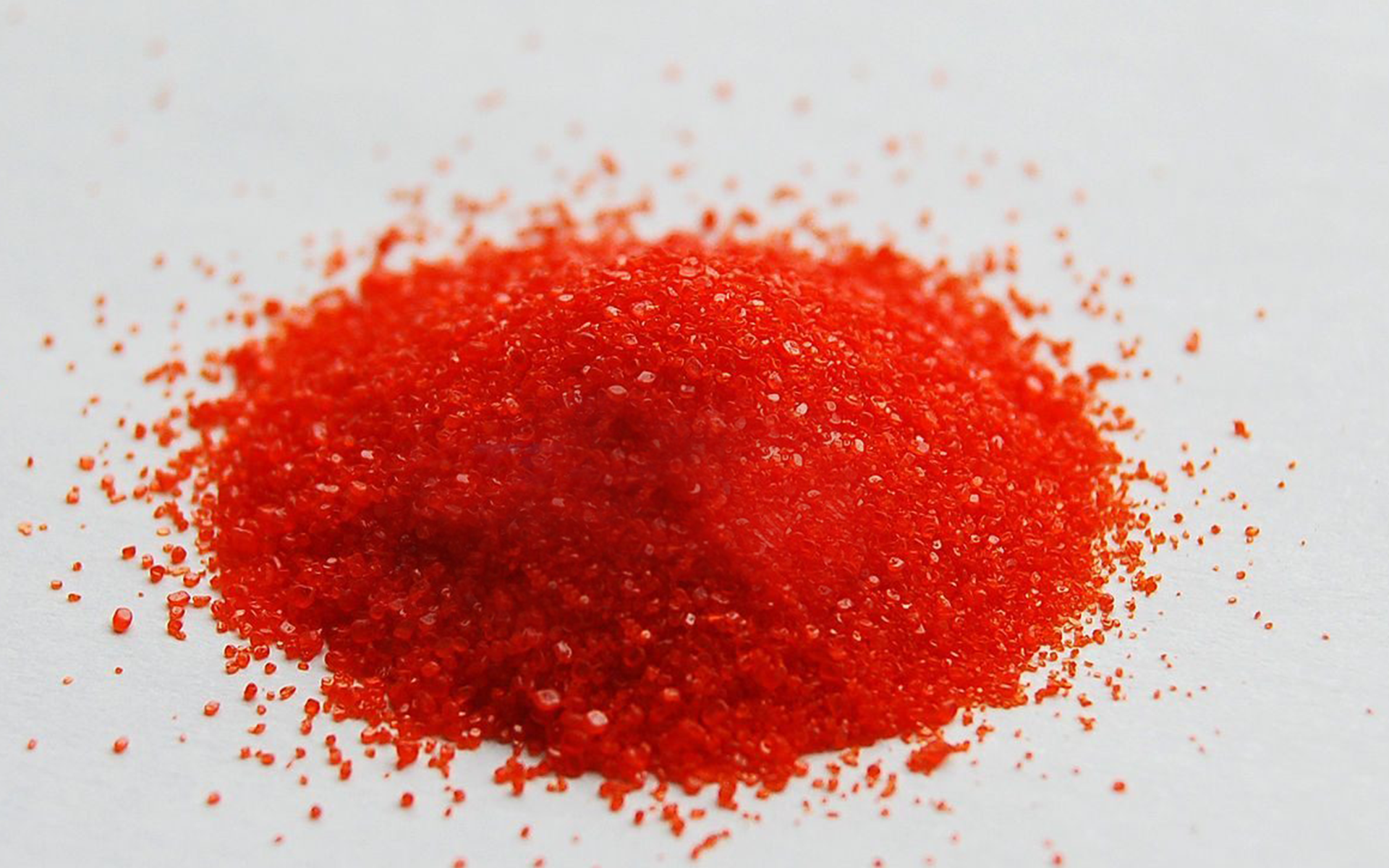
Colorimetric method
The colorimetric method measures the amount of potassium dichromate consumed by analyzing the change in absorbance of the sample at certain wavelengths.
After digestion, trivalent and hexavalent chromium are determined by measuring the absorbance of light at 600 nm and 420 nm, respectively, using a spectrophotometer. The light absorbance at these wavelengths allows the determination of the amount of residual chromium and the amount of chromium used in the oxidation process. From this, the COD index can be calculated.
The colorimetric method is easy to perform and requires less manpower, because it uses a standard sample provided by the manufacturer and a spectrophotometer, which helps to minimize errors and increase efficiency in COD determination.
3. Methods to reduce COD content in wastewater
Reducing COD content in wastewater is an important step to improve water quality and protect the environment. To treat high COD wastewater, there are many popular methods applied today. Below are the main methods to effectively reduce COD content:
Physicochemical methods – Precipitation, coagulation and flocculation
Phương pháp làm giảm COD trong nước thải này có nguồn gốc từ các chất rắn lơ lửng (TSS) hoặc không tan (bùn, cặn). Bằng cách thêm các hóa chất trợ lắng như PAC (Polyaluminum Chloride) hoặc polytetsu vào nước, các hạt rắn sẽ liên kết lại thành bông cặn lớn hơn, kết tủa và lắng xuống đáy. Quá trình này giúp tách bùn ra khỏi nước, giảm đáng kể COD. Để quá trình tạo bông cặn hiệu quả, cần đảm bảo khuấy trộn tốt, tránh làm vỡ bông cặn trước khi lắng.
Microbiological method – Using effective microorganisms
This method reduces the COD content in domestic wastewater in particular and wastewater in general, which exists in the form of dissolved organic compounds through the use of microorganisms. The treatment process can be applied both anaerobic and aerobic. Microorganisms will decompose organic compounds, use them as a source of nutrients, create simpler products and release gases, thereby reducing COD. This method is often applied to wastewater with COD below 3000 mg/L for aerobic treatment and above 2000 mg/L for anaerobic treatment.
Chemical method – Using oxidizing agents
This method is often applied to wastewater containing little biodegradable organic matter and rich in non-biodegradable substances such as phenols or surfactants. Strong oxidants such as chlorine, hydrogen peroxide and ozone are used to decompose organic compounds into simpler products. A common example is the Fenton reaction, which uses hydrogen peroxide and ferric sulfate (FeSO4) to generate hydroxyl radicals, which destroy organic compounds, converting them to CO2 and H2O. However, attention must be paid to the dosage of oxidant used to avoid adverse effects on microorganisms in the bioreactor.
Other additional methods:
- Filtering and adsorption with activated carbon: Activated carbon is used to adsorb organic substances and chemicals remaining after primary treatment, helping to reduce COD, deodorize, color and other toxic chemicals.
- Chemical coagulation method: Using substances such as PAC, aluminum alum or iron alum to precipitate insoluble solids, thereby reducing COD concentration.
The choice of treatment method depends on the specific characteristics of the wastewater and the treatment requirements. These methods not only help reduce COD but also contribute to environmental protection, ensuring that the wastewater meets current environmental standards.
4. Legal regulations on COD in wastewater
Currently, regulations on wastewater COD in Vietnam are based on two main documents:
National technical regulations on wastewater quality
- QCVN 14:2015/BTNMT prescribes the COD limit in wastewater discharged directly or indirectly into receiving water sources. This limit depends on the type of receiving water source and the wastewater treatment process.
- QCVN 40:2019/BTNMT regulates the COD index limit in domestic water discharged into the domestic wastewater collection system.
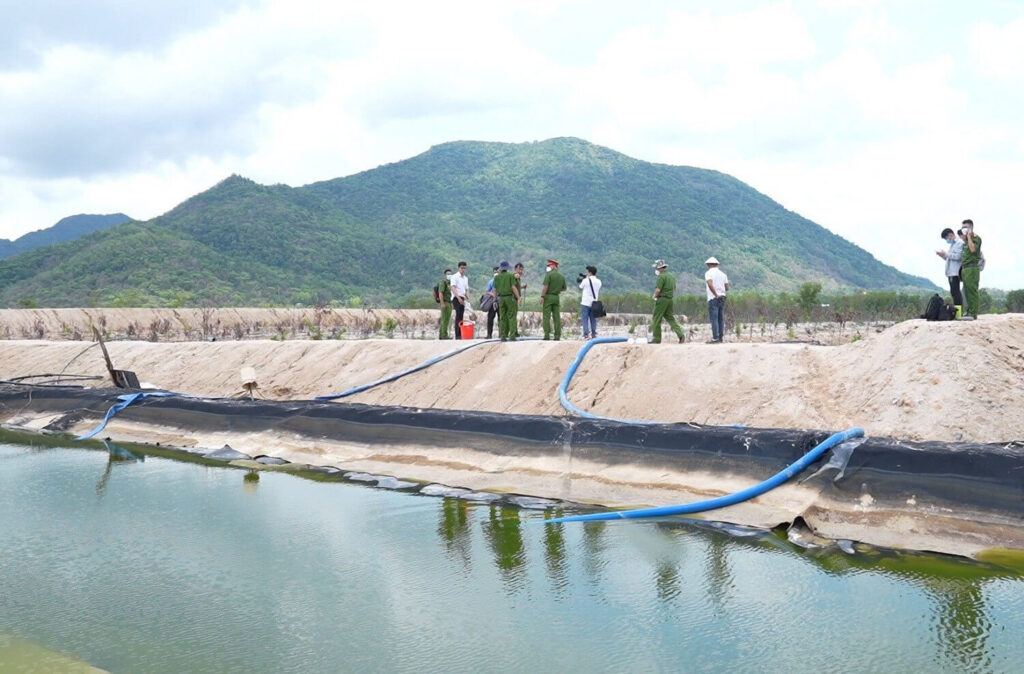
Decree No. 25/2013/ND-CP on environmental protection fees
This Decree stipulates the environmental protection fee for wastewater discharged into the environment. This fee is calculated based on the flow rate and COD concentration in the water.
In addition, some other documents are also related to regulations on COD and wastewater treatment such as:
- Law on Environmental Protection 2014
- Decree No. 80/2016/ND-CP on hazardous waste management
- Circular No. 46/2017/BTNMT guiding the payment, collection and management process of environmental protection fees
5. The most popular COD index measuring device in wastewater today
COD UV 705 IQ SAC – WTW – Made in Germany
The sensor directly measures COD and UVT (ultraviolet transmittance) in water using new SAC technology, operating at 254 nm wavelength to determine the amount of organic matter. The device does not require chemicals to measure COD, has the ability to automatically calibrate to eliminate the influence of turbidity, and has an internal self-cleaning system, requiring no moving parts.
This device is used to monitor and control wastewater in urban and industrial wastewater treatment plants, evaluate the treatment efficiency of the system, and ensure that the effluent meets COD standards. In addition, the device is also applied in other water quality control fields.
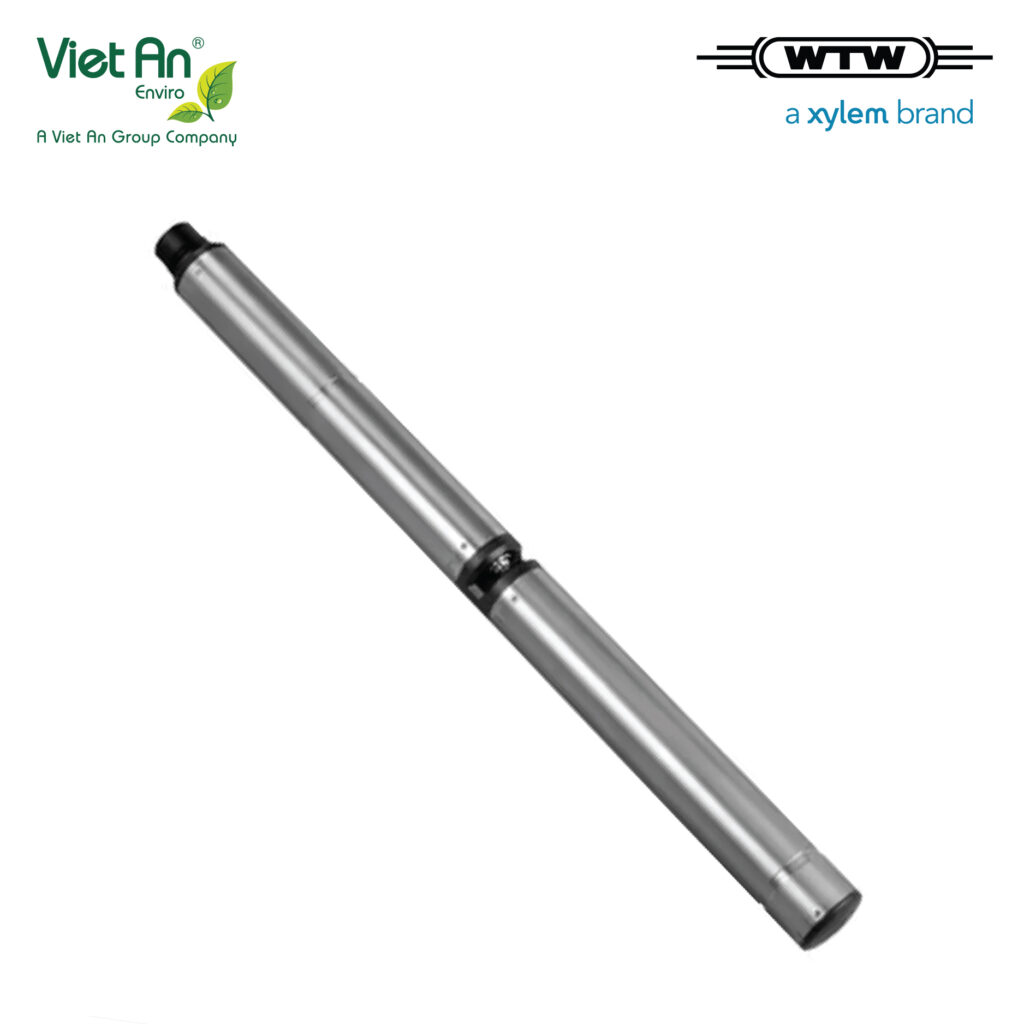
The sensor provides fast, accurate and reliable COD measurement. With its chemical-free design, the instrument saves operating costs and minimizes exposure to hazardous chemicals. The self-cleaning system simplifies maintenance and provides continuous data for efficient control of wastewater treatment processes.
See more about device to measure COD index in wastewater.
6. Conclusion
Measuring and controlling the COD index in wastewater plays an important role in environmental management and public health. Viet An is a trusted partner providing modern solutions and precise measuring equipment for monitoring the COD index in wastewater. With a commitment to quality assurance and professional technical support, Viet An helps wastewater production and treatment facilities strictly comply with environmental regulations, while improving the efficiency of the treatment process.


